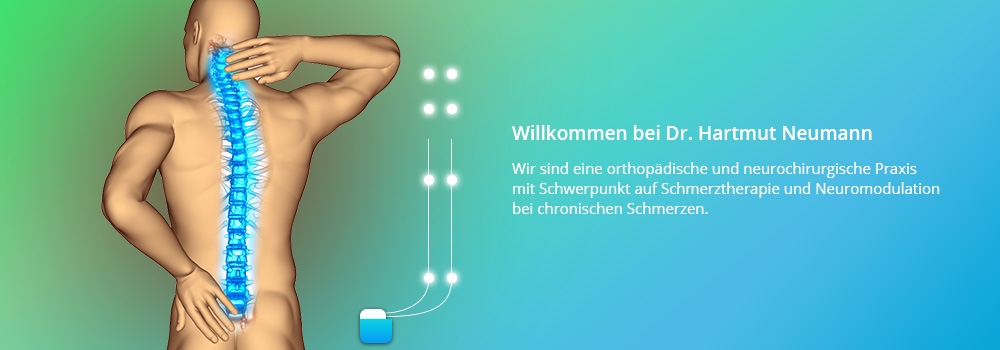FBSS/Failed back surgery syndrome
Post-laminectomy syndrome/ Post-nucleotomy syndrome/ FBSS (failed back surgery syndrome)
Unfortunately, this happens frequently. Following surgical removal of a whole vertebral arch with its spinous process, or of half of one of these, it is instability in the spine that is usually the cause of the pain. Removal of intervertebral disc tissue can later cause complaints due to constrictions, instability and adhesions.
Patients often experience the pain differently. In the case of instability, the pain is often described as feeling like the “spine is breaking in two”. The pain can be caused by certain positions, standing up for a long time, bending forward or turning the upper body. If the nerve roots are affected, patients tend to describe pains that shoot into the legs. Due to this constant pain and the significantly detrimental effect it has on quality of life, many patients often undergo yet another pointless surgical intervention such as a spondylodesis or spinal fusion, which often does not achieve the desired effect.
Alternatively, there are various courses of treatment that can be used, which combine medicine with physical therapy. Painkillers may be used as medicines, especially so-called non-steroidal anti-rheumatics. Sometimes, however, the pain can only be brought under control using painkillers that affect the central nervous system. If the painkillers are taken over a long period of time, it is recommended that a pain management therapist be consulted due to the risk of the development of tolerance or addiction. In the case of chronic post-laminectomy syndrome, it can be effective to combine painkillers with anti-depressants. If none of this helps, X-ray imaging can be used to inject anaesthetics directly into the area causing pain, which is called local anaesthesia or infiltration.
If pain continues, operations can be carried out to place electrodes or catheters in the spinal canal. It is via these electrodes or catheters that the nerve roots are stimulated to relieve pain, or painkillers are injected directly into the central nervous system. In the case of back pain, physiotherapy is almost indispensable, as this is usually the only way to ensure successful medical treatment and long-term stability. The muscles near the spine need to be trained. It is important that instructions on correct posture be followed in order to avoid excessive pressure on the spine, for example, functional occupational therapy or back exercises.
Do not despair – I have been able to help a significant majority of the patients that have come to our practice.

